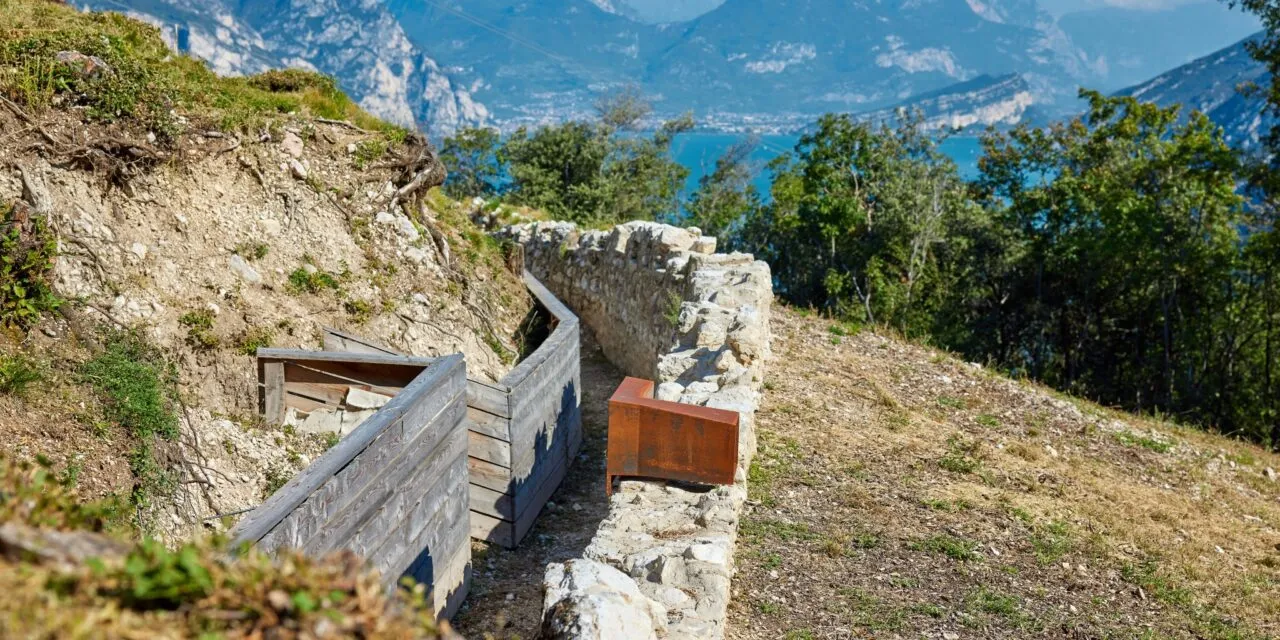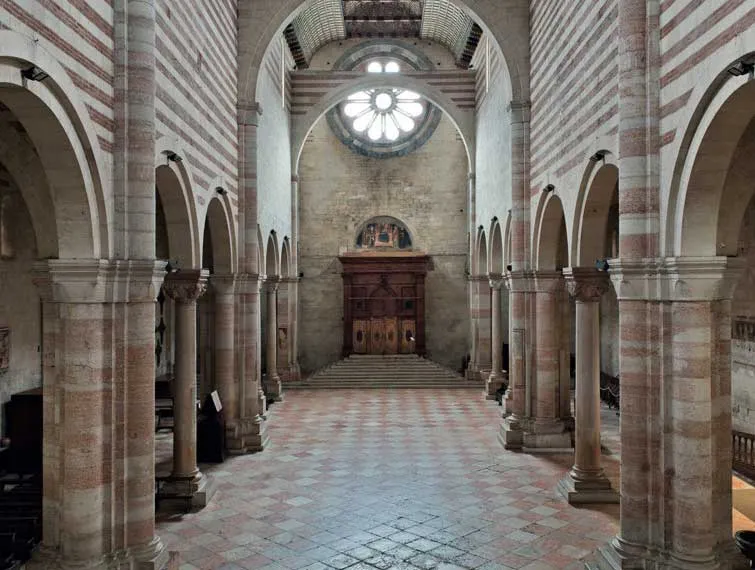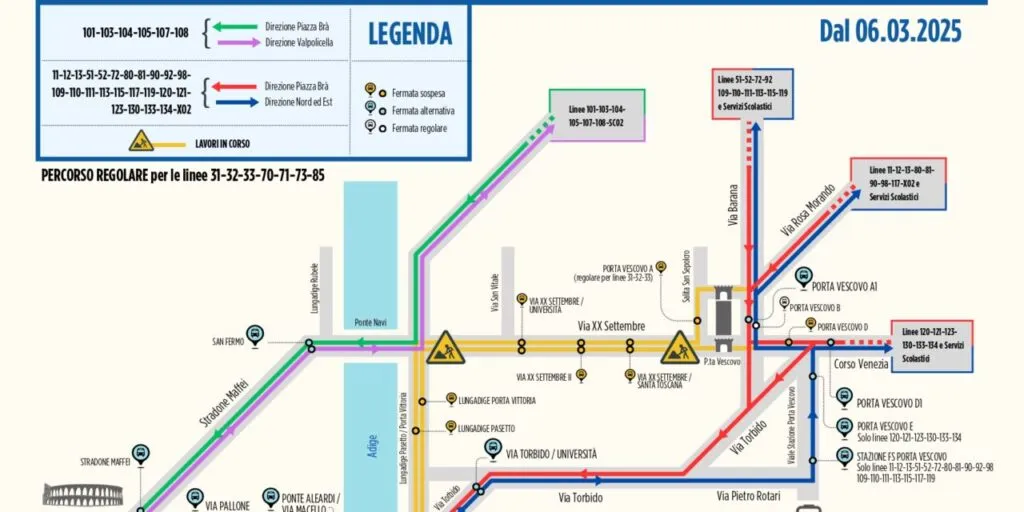A one-kilometer circular walk that follows the Great War roads and includes 130 meters of trenches and 60 artifacts. Dosso Merlo’s historical site, once buried by plants and heavy vegetation, has been rediscovered and can now be visited thanks to Alpini’s work. The trenches are located at a height of 330 meters in the hamlet of Navene (Malcesine, in the province of Verona) and are part of a 5.4-kilometer pathway rich in history and outstanding vistas.
The historical site‘s restoration was made possible by the Malcesine Alpine troops, who, during the past four years, collaborated with experts on archival work based on original maps. On the military road that goes up from Navene to Dosso Merlo, visitors can now explore the historical portion of the hamlet up to the transit routes utilized when the Gardesana was absent. It is possible to identify the area’s distinctive geological and geomorphological features, as well as the Gardesana Reserve’s vegetation.
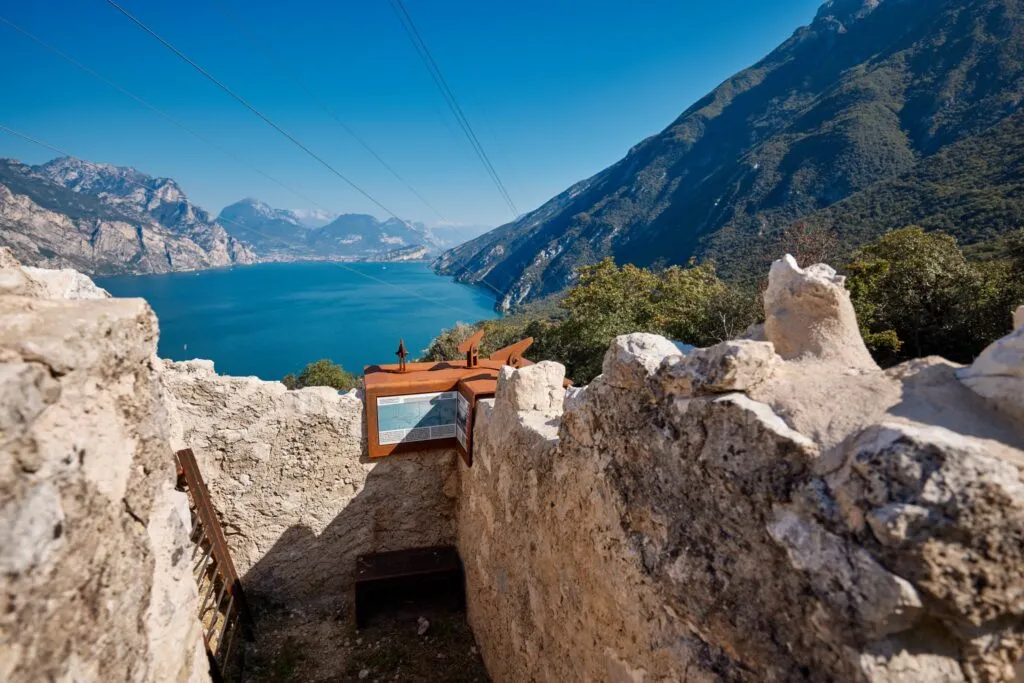
The road creates the spine of the First World War battlefield, where visitors can take in walkways, observation points, logistical artifacts, absolutely unique artillery emplacements of various calibers, kitchens, and even the cable car station that served as the starting point for the construction of the Dosso Merlo stronghold. There are also two-dimensional silhouettes of the artifacts’ original functions have been created such as the exact replica of a heliograph or a wireless telegraph with sunlight flashes reflected from a mirror.
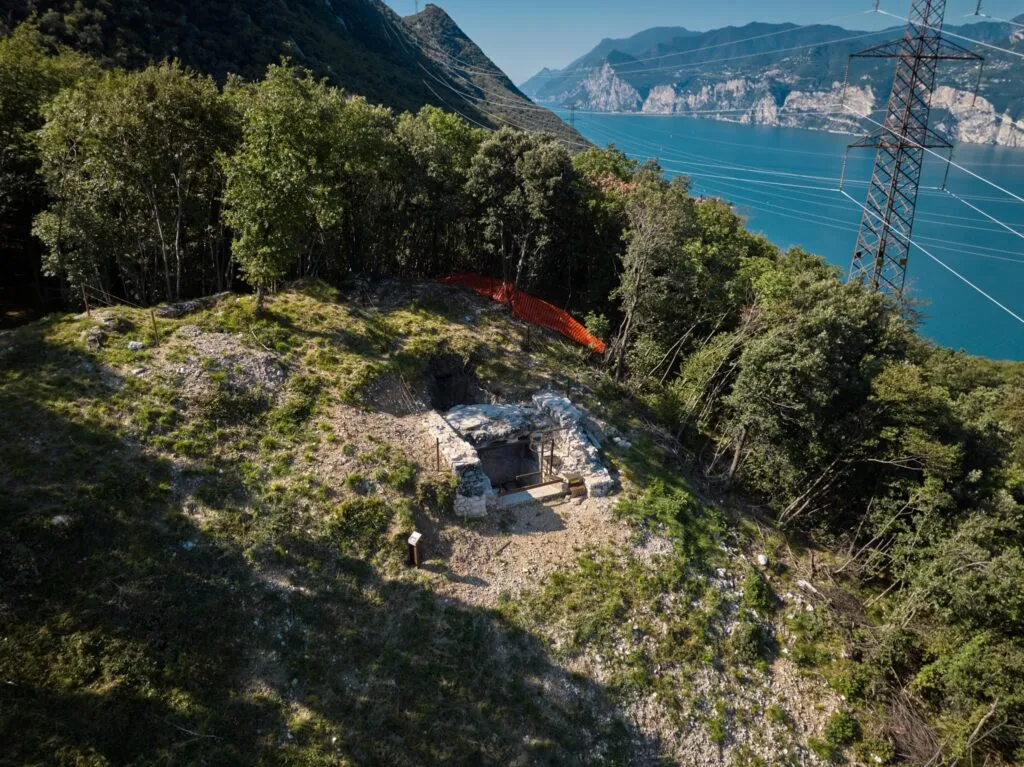
The path leading to the Dosso Merlo trenches
Eastern Gardesana Reserve is where the majority of the perimeter is located. Starting from Navene, one walks through the tracked bottom on gravel, which ends at the Dosso Merlo fortress (300 m asl), where you can see artillery positions, defensive lines, and observers active until late ’17. The route back takes a detour to Val de L’acqua (q. 320 m. asl.), after which it continues on the CAI trail to Navene.
In an excursion or circular journey that takes about an hour and a half to two hours, the visitor is guided by a system of educational and informational panels to find the recovered sites. Italian, English, and German translations of the signage allow visitors to learn more about each trench’s characteristics as well as interesting facts about World War I that are frequently left out of history books.



